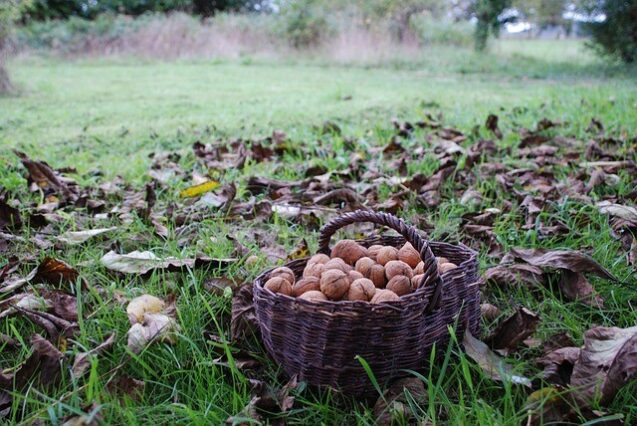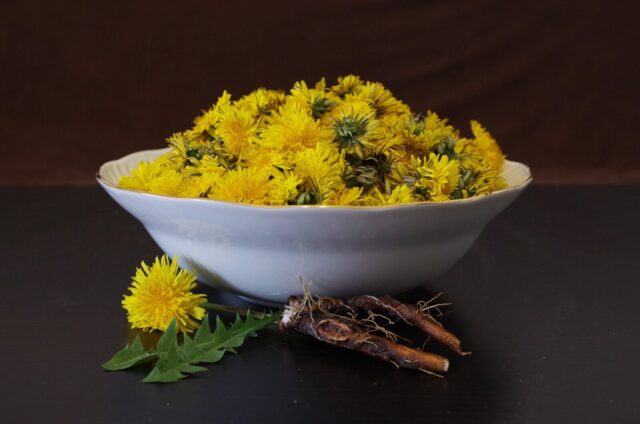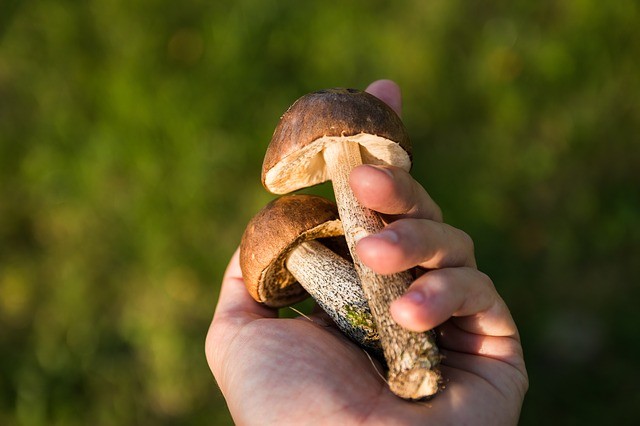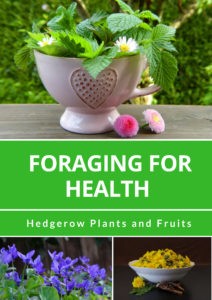Foraging is the act of gathering wild foods to eat. We live in times when the supermarket rules, and a lot of people view foraging with a lack of understanding. Here are some of the most common misconceptions about foraging for wild food.

1. Foraging is Old Fashioned
Why do we need to bother foraging for food? Isn’t that something people did in the old days? Well, yes. Foraging has sustained humankind for millennia. If it wasn’t for our ancestors knowing what wild plants were good to eat and use for medicine, we wouldn’t be here today.
Foraging used to be more common during war times, when food production was affected by blockades. Without knowledge of edible wild plants then, the strength of our nation would have suffered.
But foraging is not old fashioned. We still need to forage. It is in our blood! Humans are hardwired to look for and gather foods. Just because our lifestyle has changed so much, it doesn’t mean we have lost that basic instinct. Look how children play by making soup and potions out of plants they collect in the garden!
Foraging is not an old fashioned past time. It is something that is vital to keep us connected to the natural world. The world around us changes all the time, but the one constant throughout human history are the presence of nourishing plants and the ebb and flow of the seasons.
2. Wild Plants Don’t Taste Good

Some wild plants taste great, some don’t. However, do you like all the food that you find on a supermarket shelf?
What if you knew how to cook and prepare the less tasty plants, so create dishes that you do like the taste of? Rather than dismissing wild plant as being unpalatable, why not try using some in different ways?
For example dandelion leaves are bitter, but putting them in boiling water for a minute will remove much of that bitter flavour, so you can then use them in different dishes. You would just grab and eat a stinging nettle, would you? But applying heat to the leaves takes the sting away! Here is an easy nettle soup recipe to get you started.
3. Aren’t Foragers Just Eco-Hippies?
Well some are, and fair play to them! But foraging is not an exclusive hobby for tree-huggers. All sorts of people enjoy foraging for wild foods. Urban, rural, rich, poor, foraging is for all.
Take blackberry picking… even the most plugged in, flat-white drinking, Uber user will enjoy getting away from it all to indulge in picking a blackberry or two if given the opportunity.
4. Wild Foods are Dangerous
Heck yeah! Some can kill you… but before you turn your back on foraging, let’s at least use a pinch of common sense here.

Education is key to enjoying wild foods. This education was once passed down the generations, but as this information is being lost, it’s no wonder that lots of folk are scared of eating wild plants and fruits. What a shame!
Get a good plant identification book, take an online foraging course, or look plants up on the internet. Some edible wild plants are easy to recognise once you know how, and some do not have anything else that looks similar. That is a good way for beginners to start foraging.
Some wild edibles you could learn quickly are blackberry, clover, dandelion, rosehip, hedge-garlic, wild plum, crab-apple, wood sorrel and sloes.
Once you learn a few edible plants, you’ll find your interest and confidence in foraging will grow.
The most important rule to follow is that if you are not 100 percent sure of a plant’s identity, don’t eat it!
5. Wild Foods are Dirty
Picking wild foods is no different from eating food grown in an allotment or veggie patch, provided you follow a few rules about where you pick.
Don’t pick plants that grow in areas that could be contaminated by exhaust fumes, such as next to busy roads. Avoid hedgerows next to crop field, as they could have been sprayed with pesticide. Go for hedges on grazing land instead.
If you pick from well-used foot paths, look for edible greens that are a few feet back from the walk area to avoid dog pee, and only pick berries that grow higher than a dog can cock its leg.
When you have gathered your wild produce, wash it under a tap before eating or cooking. Simple really!
6. It’s Too Much Effort to go out Foraging
Anything worthwhile requires a little effort. You just have to make it a priority.
Ask yourself, do you want to eat organic food for free? Do you want to benefit from the broad range of vitamin, minerals and micro-nutrients that come from plants that have evolved naturally, rather than your diet being made of genetically identical crops?
If the answer is yes, then make the time to go for a simple walk for an hour, even just once per week, and get some wild in your diet!
It is amazing how many edible plants you can find in a short amount of time, so no excuses!
7. Won’t Picking Wild Plants Harm Wildlife?
Picking wild food is sustainable, as long as you forage carefully and follow these rules:
• Only take what you need. Gathering a few plants, fruits or nuts for a simple meal or two is not likely to cause any harm. Gather bagfuls to sell to your nearest foodie outlet however, it will have an effect on the local environment.
• Do not uproot plants, as they will not regrow.
• Leave some for the wildlife that depend upon it, and only take from abundant areas.
• Avoid disturbing other plant life and habitat as you tread.
• If you discover an edible plant that is a rare species, then do not pick it.
Foraging for wild food is a simple joy that is available to anyone and everyone. It gives us quality food, new tastes and connect us to nature. We get exercise, fresh air and quality time with the people we are with, or with ourselves.
Foraging is more than just gathering food. It is a way to enliven the senses, and that can only bring benefits to our health and well-being.


Learning how to forage the right way can save your life one day. Brilliant post about the ins and outs of foraging. Thanks!
Thanks Donna!
So interesting to read from your website even though I already have a fair amount of foraging knowledge. Thank you.
I think it is a little naive to think people will only take what they need, and remember to leave most of the free edibles they find for others, and, of course, the wildlife that depend upon them for their existence.
I have seen wild plum, damsons, blackberry bushes and sloes stripped and wrecked by people who care nothing for the wants of others, man, bird or beast, hence I no longer tell anyone where I find things. This is not out of greed as I, as do some others, endeavour to do what’s right here, but because all too often I have seen plants decimated by greed driven people.
I care deeply for wildlife, but not for people who can just go to the supermarket and get whatever they want and yet think nothing of taking everything from the wild that they can lay their hands on.
Wild food being dangerous? 1 in 5 people die from poor diet whether or not they are foragers. Can some wild foods kill you? Sure. But the way most people eat is highly likely to.
Fantastic article, I couldn’t agree more!
Have an awesome sunny day from the other side of the pond!
Rick Smith
rick@inthegardenlife.com
https://inthegardenlife.com/